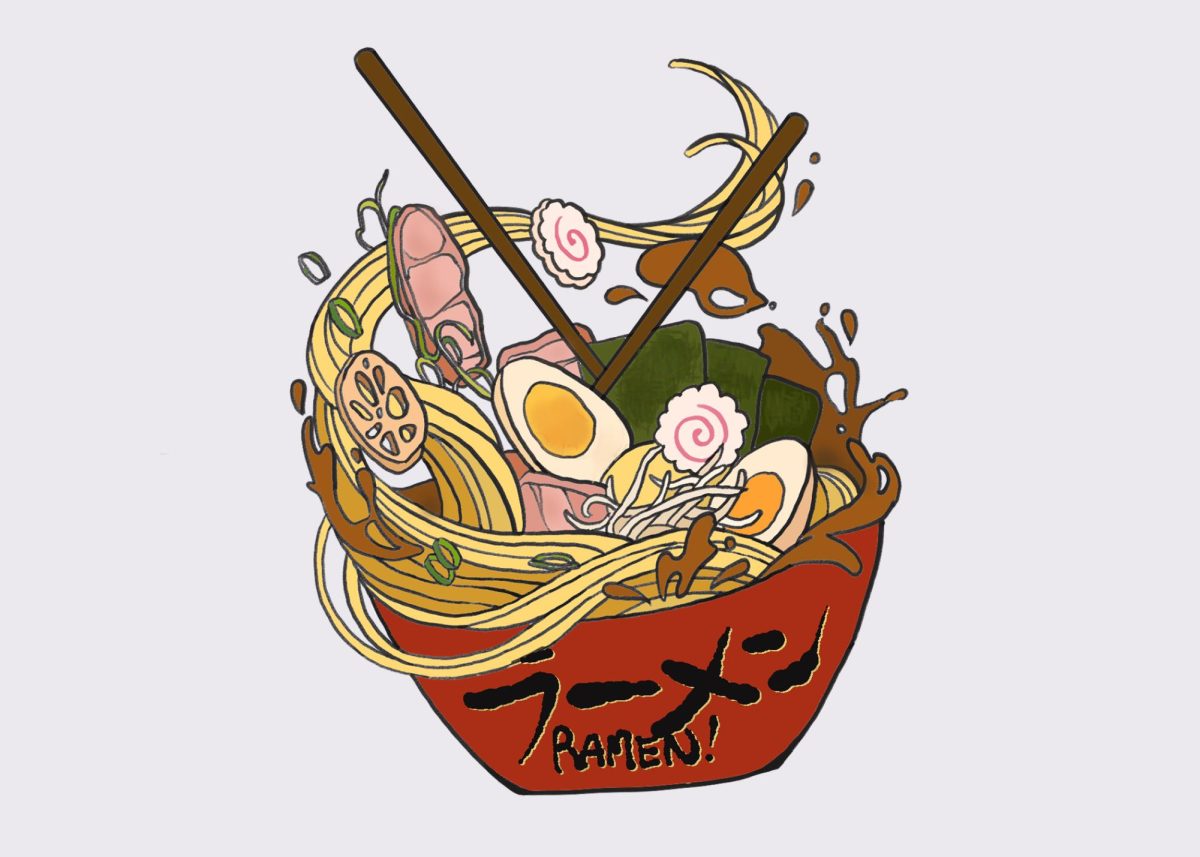They say all college students eat store-bought ramen — a cheap meal you could grab and make on the go. It’s almost a miracle to imagine how a crumbly yellow brick can become a warm bowl of noodles in 60 seconds; all you have to do is add hot water and wait. Or if you’re feeling fancy, crack an egg, add some spice. I’ve been guilty of calling a bowl of ramen a filling and nutritious dinner after a long day. It’s not a good look: Instant noodles are loaded with sodium and aren’t the most nutritious.
I’ve had my fair share of ramen memories. When I was growing up in the Philippines, my family used to take trips to Japan. I’m lucky to have tried ramen in different regions and to have seen how specific ingredients and twists in preparation can vary from place to place.
Each bowl of ramen tells a story, not just of its ingredients, but of the culture and traditions that shaped it. I remember bleaching a table during an overnight field trip trying to cook instant noodles in my sophomore year of high school. It was always a post-exams treat with my family. I challenged myself last spring to try a different bowl of ramen from a new shop for a week. There’s one memory at Fordham that changed my life and pushed me in the right direction.
“Tampopo” and the Act of Eating
During my first semester living on campus, my roommate invited me to watch the movie “Tampopo” for one of his classes. One of the first scenes of the movie is of a master teaching his pupil how to eat ramen. The pupil asks whether to eat the soup or the noodles first, but the master says to “observe the whole bowl.” He encourages his student to savor the aromas and pay attention to details like the sinking seaweed or the “jewels of fat glittering on the surface.”
The act of eating becomes more than just a necessity. It’s an experience; another way to appreciate the finer details. It’s a reminder to be present in the moment, to savor each slurp and appreciate the care that goes into making a hearty bowl. To lift a pair of chopsticks and twirl the noodles is a dance of flavors and textures. The chewy strands of noodles intertwine with the rich, savory broth as a combination that can tickle taste buds and warm souls. Each slurp evokes hints and shades of the skill and care that went into their preparation: the hours spent simmering bones for broth, the precision of knife cuts, the balance of seasonings.
From then on, my relationship with ramen evolved beyond mere sustenance: It became a gateway to broadening my pallet. Whether it was venturing out to discover the best ramen joints in the neighborhood or trying to cook (emphasis on the trying), each bowl of noodles held memories. As a resident assistant, I even made one of my bulletin boards themed around ramen spots in New York City.
Each bowl of ramen tells a story, not just of its ingredients, but of the culture and traditions that shaped it.
“New York” Ramen
Fordham Lincoln Center students won’t have to travel far to have a taste of some of the best ramen in New York City. You could try world-famous franchises like Ippudo Westside on 51st Street and 9th Avenue. Wait in the winding line for the famed booths of Ichiran on 49th Street and 7th Avenue. There are also local stores such as Totto Ramen on 51st Street and 10th Avenue or Zurruto on 72nd Street and Columbus Avenue. It can be intimidating with all these options nearby, but whether you’re craving a rich and savory broth or a spicy kick, these neighborhood establishments provide a taste of ramen right outside Lowenstein.
We hear talk about “New York” pizza or “New York” bagels like you could condense the flavors of such a city into a category, but what about “New York” ramen? I found that at Ramen by Ra at the Bowery Market, Chef Rasheeda Purdie’s brunch ramen concept takes on and enhances classics. From the chimichurri-shoyu base of the steak and soy egg ramen to the everything egg drop ramen’s sesame-shoyu broth, each bowl offers a fusion of flavors and textures that elevate the traditional ramen experience. On mornings when I know I’ve got a big day ahead, I’ve stopped by first thing in the morning for a warm bowl. There’s something about that broth that heals and gives me the power to take on the day. There’s something special about sitting shoulder-to-shoulder at a five-seater bar, watching Chef Ra work her magic as jazz music pipes. And that right there’s another great ability of this meal: It brings together flavors that would not have otherwise matched or collided in the first place.
Ramen is more than just a college meal in crunch times. It’s a journey through flavors and cultures, a reminder to appreciate the finer things in life. I am reminded in each slurp that ramen has the power to warm both bodies and souls.


